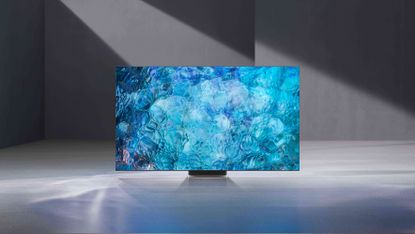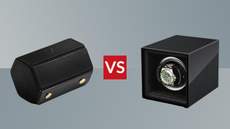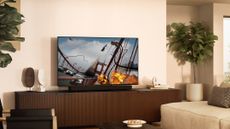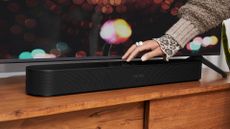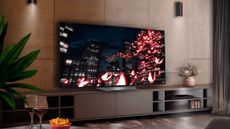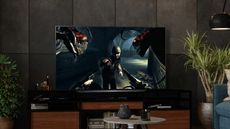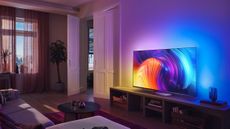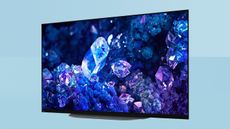Samsung is set to finally unveil its long-awaited first QD-OLED TV at CES 2022 in January, according to a new report from Business Korea (via OLED-info.com). This is a combination of the Quantum Dot (QD) tech that makes Samsung's QLED TVs so good, with OLED TV technology – and could really shake up the hierarchy of the best TVs.
It has been reported that QD-OLED TVs are coming over the horizon since very early in 2021, when it was said that Samsung Display had fully working prototypes to show off to various companies, and it's been suggested that 55-inch and 65-inch sets were likely to lead the charge. Now this report says that Samsung itself will be the company to introduce the first QD-OLED sets, which is no big surprise.
QD-OLED is one of the most exciting upcoming TV technologies because it could offer the best parts of both QLED and OLED TVs, eliminating the big downside of each in the process. Even the best OLED TVs can't match LED when it comes to brightness; but even the best Samsung TVs can't offer the same precise contrast for dark areas that OLED can. The idea is that QD-OLED should offer more brightness than OLED on its own, but while retaining the supreme contrast of OLED.
The concept for the technology is that in a 4K QD-OLED screen, you have an OLED panel at the back that's all blue, and is divided into 3840x2160 pixels – like any 4K screen. Each of those pixels has sub-pixel areas, where Quantum Dots are used to filter that blue light into red or green as needed (leaving it alone for blue). If all three colours shine at once, you get white. If you want that pixel to be dark or black, the pixel can turn down (or off) its light, just like OLED TVs.
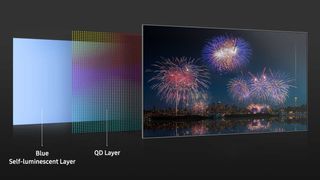
Blue OLED layer > Quantum Dot filter on top > image perfection?
Why is QD-OLED better than current tech?
What this QD-OLED structure is doing is basically mimicking the way things are done now in other screen types, but does it better, by combining different tech.
For example, current OLED TVs already use a colour filtering system to create many of their colours – it's just that Quantum Dots would do it more efficiently, which means they don't cause brightness to be lost, overcoming that traditional issue for OLED.
And actually, the whole system is kind of similar to how QLED TVs work now, where an LED backlight shines through a Quantum Dot filter – it's just that an OLED 'backlight' will offer pixel-precise local dimming for much better contrast than LED TVs can manage. Even Samsung's mini-LED only offer thousands of 'dimming zones', whereas in the QD-OLED screen, every single pixel is effectively a dimming zone, so there are millions.
The end result is actually effectively an attempt to mirror how high-end OLED screens on smaller devices work, such as the Nintendo Switch OLED. Every pixel on these OLED screens is divided into three sub-pixels of red, green and blue – as I mentioned above, that's how the new TVs will work. The difference is that on small screens, that can be achieved solely with OLED tech – no Quantum Dots required.
But it's way too expensive to make TV-size OLED screens like this, so instead QD-OLED will make the same principles work by using a cheaper single-colour OLED panel and letting Quantum Dots add the other hues.
What are the downsides of QD-OLED?
With Samsung having just introduced mini-LED technology in its TVs in 2021 – gaining five-star reviews from us for the Samsung QN900A, Samsung QN95A and Samsung QN85A in the process – we're not sure where QD-OLED will fit in its pricing plans. It could be pretty damn expensive… at least, for the first few generations, while Samsung gets its manufacturing in place.
It also looks likely to only be available in 4K, so if you're wanting one of the best 8K TVs, you'll need to stick with LED or mini-LED TVs (or the few hideously expensive 8K OLED TVs).
And we don't know whether there will be any danger of burn-in, as many OLED TVs have had – this is definitely something we'd want to know more about, if these TVs are really going to be brighter than current OLED TVs, because heat is the real danger with burn-in, and generally more brightness means more heat.
I can't wait to find out anyway – QD-OLED really could be a new era for TVs.
